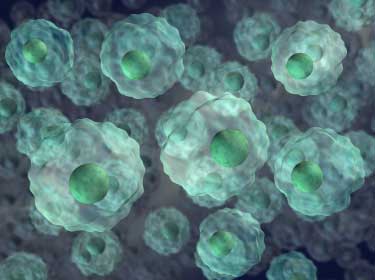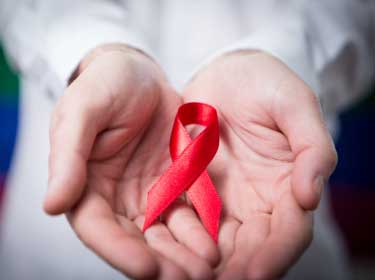Written by Roshini Beenukumar, PhD
As humanity faces an unprecedented crisis with the global COVID-19 pandemic, crucial details on viral transmission and other characteristics are emerging. Thanks to decades of dedicated research, our understanding of viral diseases and their treatments is currently much advanced compared to the AIDS epidemic in the 80s. In a paper published last year in the journal Nature Communications, a team of researchers from Heidelberg University, Germany, showed that HIV spreads through direct cell-to-cell contact. They used a combination of 3D cell culture systems, quantitative image analysis, and computer simulations to study how HIV spreads in 3D tissue-like environments. The study revealed that HIV-1 largely spreads via direct cell-to-cell contact in 3D tissue microenvironments rather than the previously assumed cell-free viral particle mode.[1;2]These new insights into HIV transmission show how much more there is to learn about HIV and other pathogenic viruses.
HIV transmission within the human body – what we know so far
The most well-studied means of HIV spread is via cell-free viral particles – viral particles released by infected cells diffuse and infect other cells. However, viral particles can also be transferred from cell to cell via close contact. Studies using in vitro cell culture models revealed that such cell-to-cell transmission, where donor and target cells come into close contact (known as virological synapses) to release virus particles, are more efficient.[3]This study provides evidence that direct cell-to-cell spread of HIV prevails in a 3D tissue environment.[1;2]
A synthetic ex vivo 3D cell culture model system to study HIV spread

"Studies on HIV replication in the lab are mostly conducted in simple cell culture experiments in plastic dishes that do not reflect the complex architecture and heterogeneity of tissue", explains the corresponding author of the study, Prof. Dr. Oliver Fackler of the Center for Integrative Infectious Disease Research (CIID) at Heidelberg University Hospital.1 Such 2-dimensional experimental systems do not take into account the high motility, which is characteristic of CD4 T cells (the preferred cell type infected by HIV), and, therefore, is unsuitable to access the impact of HIV-induced reduction of their motility on virus transmission.
To overcome these limitations of 2D-cell culture systems, the team of researchers from Heidelberg University established a 3D cell culture system using HIV-1-infected primary human CD4 T lymphocytes in a three-dimensional scaffold generated using collagen. The researchers analyzed a number of factors such as pathogen diffusion, infectivity, replication dynamics, cell motility, cell-cell interactions and the phenotypes of donor and target cells.
"This yielded a very complex set of data that was impossible to interpret without the help from scientists of other disciplines", says Dr. Andrea Imle, the first author of the study.[1;2]
An interdisciplinary approach to studying HIV-1 transmission in 3D – INSPECT-3D
The experimental team collaborated with scientists proficient in image processing, theoretical biophysics, and mathematical modeling to analyze the data. Their approach dubbed INSPECT-3D, an Integrative method to Study Pathogen spread by Experiment and Computation in Tissue-like 3D cultures, consisted of a step-by-step protocol to analyze HIV transmission as detailed below.
- Establishment of an ex vivo human CD4 T 3D cell culture model system
- Generation of data on pathogen spread on the population level
- Generation of data on pathogen spread on the level of single pathogens
- Mathematical modeling of population dynamics
- Generation of data on cell motility and contact parameters
- Mathematical modeling of cell motility
- Combine both modeling approaches into an integrated spatial infection model
- Experimental validation of predictions from the integrated spatial infection model
"Our interdisciplinary study is a good example of how iterative cycles of experimentation and simulation can help to quantitatively analyze a complex biological process", states Prof. Dr. Ulrich Schwarz of the Institute for Theoretical Physics at Heidelberg University.[1]
The 3D culture system recapitulated the in vivo motility of CD4 T cells and their reduction upon HIV-1 infection. The subsequent data analysis revealed that cell-to-cell HIV transmission predominates in a 3D tissue environment. Such an environment promotes direct cell-to-cell transmission of the virus while suppressing HIV-spread via cell-free viral particles. Additionally, the analyses also revealed two novel characteristics of cell-to-cell HIV-1 spread in 3D environments. First, for successful viral transmission to target cells, individual cell-cell contacts need to last at least 25 minutes and second, increasing the target cell density is enough to increase HIV-1 replication in a 3D environment.

"Our models allowed us to integrate short single-cell microscopy films with long-term cell population measurements and thereby to estimate the minimal time span required for cell-to-cell contacts to transmit infection", explains Dr. Frederik Graw of the BioQuant Centre of Heidelberg University.[1;2]
Conclusion
The researchers successfully applied a novel integrated approach named INSPECT-3D to study HIV-1 spread in CD4 T cells. Their analyses revealed that cell-to-cell HIV-1 transmission largely prevails in tissue than the previously assumed cell-free viral particle mode. In 3D tissue environments, the motility of donor and target cells contributes to the effectiveness of HIV-1 transmission. The ex vivo 3D cell culture experimental approach combined with mathematical modeling proved to be powerful in understanding the dynamics of HIV spread in infected hosts.[1;2]
Future directions
Such in-depth analysis of viral transmission is vital to develop effective treatments against these virulent pathogens. The researchers believe that “INSPECT-3D will provide the infectious disease community with a framework to exploit the full potential of ex vivo tissue engineering for the analysis of pathogen spread.” They also hope that their critical findings on HIV transmission will lead to new therapeutic approaches in HIV treatment. Besides HIV-1, this approach can be adapted to study a range of viral, bacterial, and parasitic pathogens.[1;2]
"Stay informed with the latest news from PHCbi”

Reference
1. HIV spreads through direct cell-to-cell contact.EurekAlert! https://www.eurekalert.org/pub_releases/2019-07/uoh-hst072519.php.
2. Imle A, Kumberger P, Schnellbächer ND, Fehr J, Carrillo-Bustamante P, Ales J, Schmidt P, Ritter C, Godinez WJ, Müller B, Rohr K, Hamprecht FA, Schwarz US, Graw F, Fackler OT. (2019). Experimental and computational analyses reveal that environmental restrictions shape HIV-1 spread in 3D cultures. Nat Commun. 10, 1–18.
3. Bracq L, Xie M, Benichou S, Bouchet J. (2018) Mechanisms for Cell-to-Cell Transmission of HIV-1. Front Immunol. 9, 260.
About PHCbi
The “bi” part of our new brand PHCbi is not only a shortened form of the word “biomedical” but also represents both our strength and philosophy as an abbreviation of “biomedical innovation.”
Since the launch of our first Pharmaceutical Refrigerator model in 1966, we have taken advantage of this technology to create exceptional medical and laboratory products and services with a high degree of quality and reliability. We have worked to meet the expectations of customers in the medical and life science fields under both the Sanyo and Panasonic brands. See more detail from "About PHCbi". Find PHCbi's customer case study in the world.